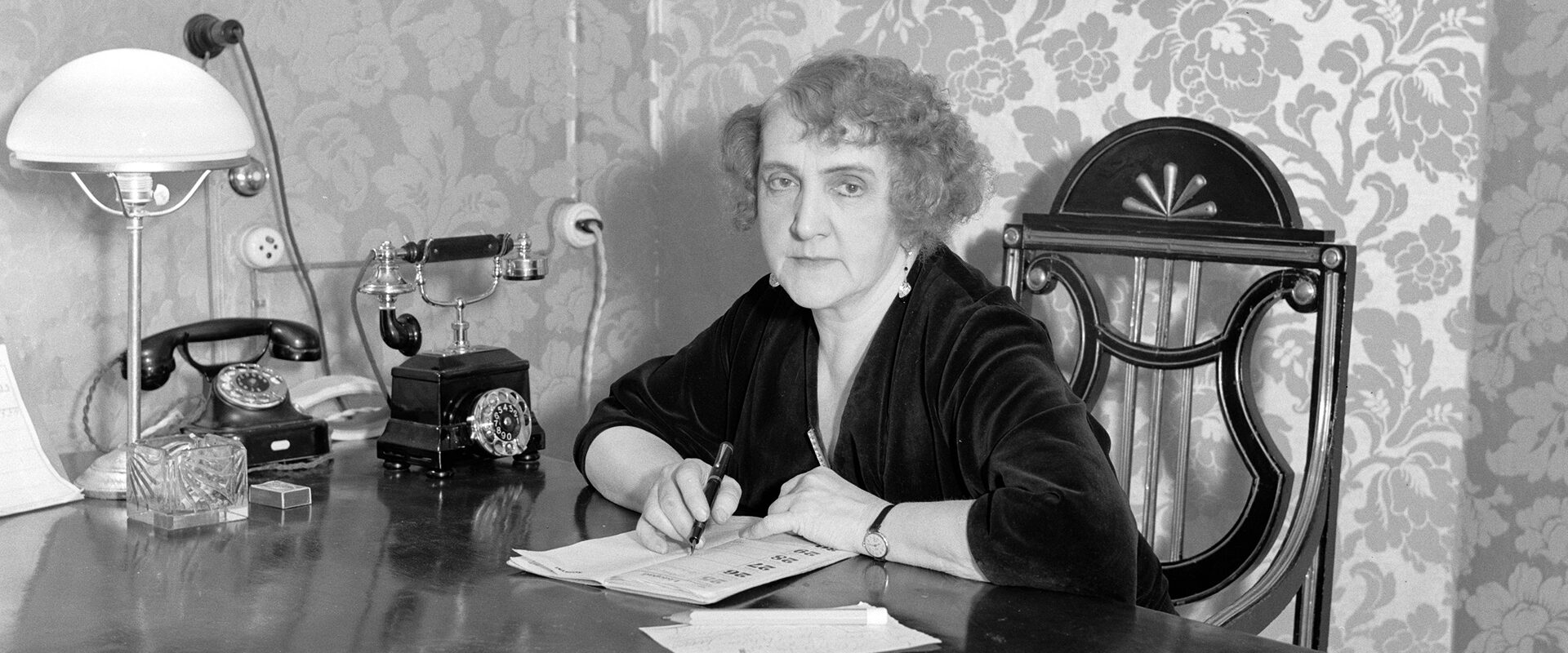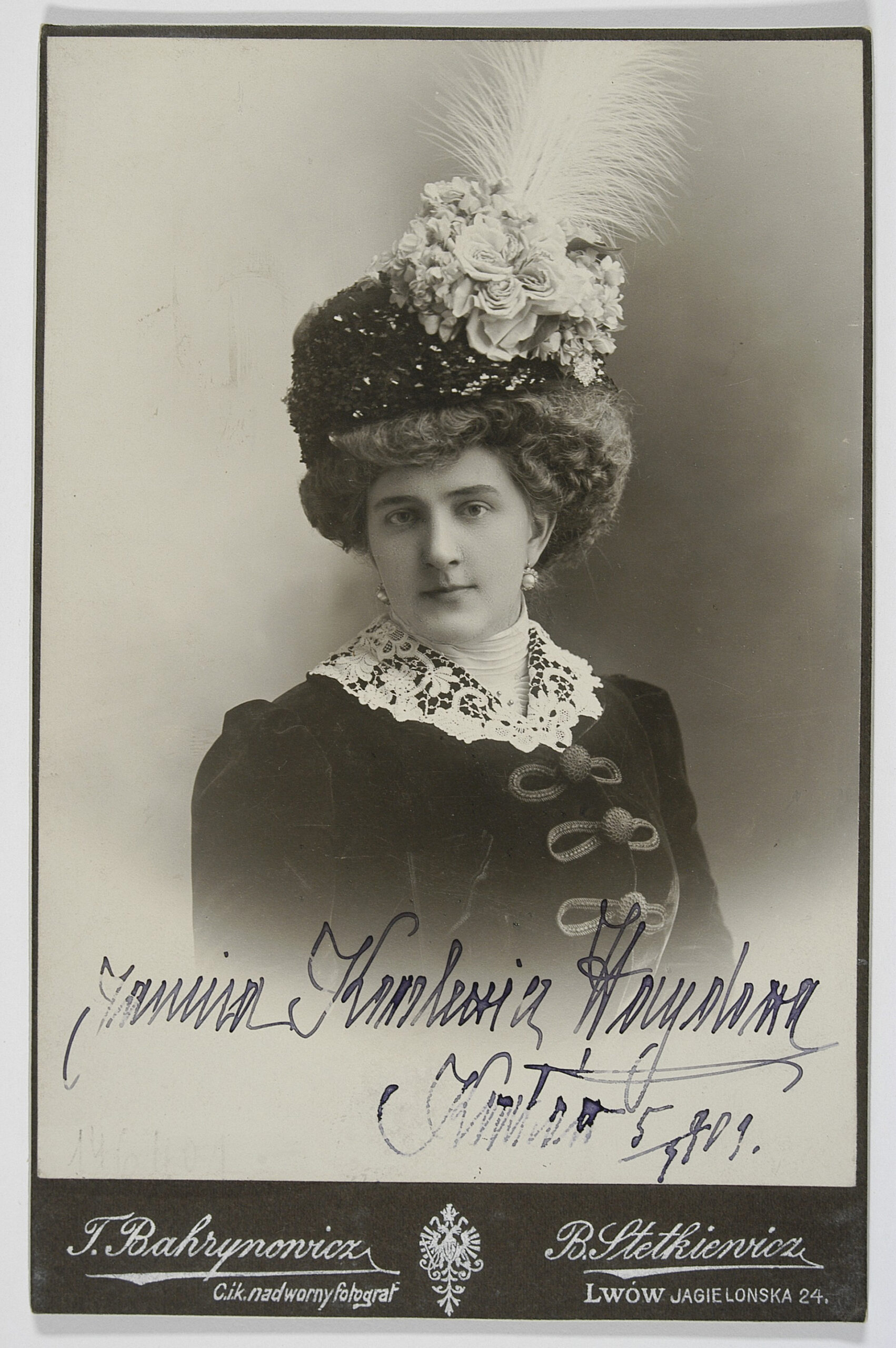 Janina Korolewicz-Waydowa – the first female director of Polish opera house
Janina Korolewicz-Waydowa – the first female director of Polish opera house
Janina Korolewicz-Waydowa’s voice captivated audiences in Poland and around the world, and her artistic talent was matched by managerial skills. She defied societal norms and criticism alike. She managed the opera at the Grand Theatre in Warsaw twice, and she served as the director of the Lviv Opera. Looking back, she can be seen as a pioneer on the path to women’s emancipation. Janina Korolewicz-Waydowa was ahead of her time by an entire era, combining the image of an opera diva with a leadership role.
It is September 1917. World War I continues. The Regency Council takes command of the Polish legions, and Józef Piłsudski is imprisoned in the military fortress of Magdeburg. Poland is still a year away from regaining independence – officially declared on November 28, 1918. Polish women are still over a year away from obtaining voting rights. Yet, in September, in German-occupied Warsaw, a woman is appointed director of the opera at the Grand Theatre for the first time.
Janina Korolewicz-Waydowa is still a young woman of 41 (born in Warsaw on January 3, 1876), with professional experience including a number of leading opera roles. She studied under Walery Wysocki at the Galician Music Society in Lviv and debuted in 1893 as Hanna in “The Haunted Manor” by Stanisław Moniuszko at the Lviv Opera. She was praised for her statuesque beauty and unique voice, which, according to Professor Stanisław Niewiadomski, was “so pure that – compared to it – a silver bell sounded as a mere silver plate.”
She began her artistic career as a lyric-coloratura soprano. Three years after her Lviv debut, she became a soloist at the Warsaw Opera. She performed bel canto roles, including Amina in Bellini’s “La Sonnambula” and Nedda in Leoncavallo’s “Pagliacci.” She also portrayed Micaëla in “Carmen,” Gilda in “Rigoletto,” Marguerite in “Faust, ” and Moniuszko’s “Halka.” She was among the first to perform the title role in Władysław Żeleński’s opera “Goplana.” It was on the Warsaw stage that she met the legendary Enrico Caruso during a special concert for Tsar Nicholas II and his wife.
After a few years, she secured a contract at the Berlin Opera (1902). That same year, she married a lawyer – Władysław Wayda. Thus began her decade-long international career. She performed at the San Carlo Opera in Lisbon, then at Teatro Real in Madrid, Odessa, and Prague. In Paris, she trained with the renowned tenor Jean de Reszke. From 1904 to 1906, she sang at the Covent Garden in London, where she once again crossed paths with Enrico Caruso and the famous Russian bass Feodor Chaliapin. In late 1910, she performed at the Chicago Opera, and the following year, the renowned soprano Nellie Melba, who sang Marguerite in “Faust” alongside her, invited her on a tour of Australia.
Korolewicz’s career developed alongside the evolution of her voice. Over time, she took on more dramatic soprano roles, including Tosca, Cio-Cio San (“Madama Butterfly”), Amelia in Verdi’s “Un Ballo in Maschera,” and even Wagnerian roles such as Elsa in “Lohengrin” and Elisabeth in “Tannhäuser.”
When World War I broke out in 1914, she was performing at the Lviv Opera. At the same time she was working as a nurse in a military hospital. On March 17, 1916, she sang the title role in “Halka” at the Lviv Municipal Theatre, in honor of Marshal Józef Piłsudski.
When she took over as director of the Warsaw Opera in September 1917, she faced criticism for the supposed decline in performance quality. Additionally, the theater struggled financially. However, with her determination and managerial skill, Korolewicz proved she was the right person for the job. Over the next two years, she successfully staged “Paria” by Moniuszko, “The Castle of Czorsztyn” by Kurpiński (on the 60th anniversary of the composer’s death), “Mazepa” by Minchejmer, “The Old Tale” by Żeleński, the Polish-language premiere of “Eros and Psyche” by Różycki (1918), as well as “Orpheus and Eurydice” by Gluck and “L’Africaine” by Meyerbeer, in which she performed the role of Sélika. Thanks to her efforts, the phenomenal soprano Ada Sari made her Warsaw debut in Mozart’s “The Abduction from the Seraglio” and Rossini’s “The Barber of Seville.”
As soon as Poland regained independence on November 11, 1918, Korolewicz resigned. The tense political situation and growing challenges in the theater likely influenced her decision. However, she remained a soloist. On February 9, 1919, she performed “Halka” for the first time in a free Poland.
Her management experience with the Warsaw Opera paid off when, in the summer of 1919, she was invited to become the director of the Lviv Opera. Despite financial difficulties, she accepted the offer and opened the 1919/1920 season with “The Haunted Manor.” In Lviv, she served both as director and lead soprano, performing as “Tosca,” “Aida,” and “Santuzza.” She invited top opera singers of the time, such as Józef Mann and Ewa Bandrowska, and prioritized Polish composers’ works. Alongside other opera artists, she gave charity concerts in various venues and on the streets of Lviv, raising funds for widows and orphans of fallen city defenders. Her final performance as the director was “Aida,” after which she left for the United States for three years.
In 1923, Korolewicz returned to Poland and lived in Zakopane for several years before moving back to Warsaw, where she opened her own vocal studio. Interestingly, she became the director of the Warsaw Opera again, holding the position from 1934 to 1936. She aimed to modernize productions with visually lavish performances inspired by contemporary revue shows. Her new strategy included hiring dancer Loda Halama as the second prima ballerina. She staged “Aida,” “Carmen,” “The Land of Smiles” by Lehár, “Don Carlo” by Verdi, “Harnasie” by Szymanowski. She also staged the Polish premiere of Bizet’s “The Pearl Fishers.” However, due to harsh criticism from the press and conflicts within the artistic team, she once again stepped down as director.
During World War II, she remained in Warsaw. Afterwards, she moved several times. She celebrated her 50th artistic anniversary in Kraków. In her late years, she returned to Warsaw where she passed away on June 20, 1955 – she was buried at Powązki Cemetery. In 1958, the Ossolineum Publishing House in Wrocław released her autobiography, “Sztuka i życie – mój pamiętnik” (“Art and Life – My Diary.” Seven decades later, on March 12, 2022, the director of the Polish National Opera Waldemar Dąbrowski unveiled a marble bust of Janina Korolewicz-Waydowa, created by sculptor Barbara Falender, in the foyer of the Warsaw opera house.






